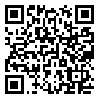BibTeX | RIS | EndNote | Medlars | ProCite | Reference Manager | RefWorks
Send citation to:
URL: http://jcpp.iut.ac.ir/article-1-2516-en.html
In vitro propagation of three Iranian apricot cultivars, “Ghavami”, “RajabAli” and “Khiveei” was studied by direct micropropagation technique. To optimize sterile manipulation, shoot nods of one year-old dormant vegetative shoots and current growing vegetative shoot were cultured in WPM medium after treatment by HgCl2, citric acid, ethanol and NaClO (10, 15, 20 min). Establishment of buds was tested in the MS and WPM mediums. Proliferation of sprouting buds was evaluated in WPM medium supplemented with three concentrations of (0.5, 1 and 2 mg/l) BAP and 0.05 mg/l of IBA. A half-Strength MS medium supplemented with three concentrations (0.5, 1 and 2 mg/l) of IBA was used as a rooting medium. The greatest number of contamination-free shoots in HgCl2 0.01% and citric acid 0.07% treatments were obtained. No significant difference was found between two different mediums in terms of bud vegetative growth. The shoot number and length were significantly affected by apricot varieties and BAP concentrations. The greatest numbers of proliferated shoot were observed in Rajabali and Ghavami varieties at 1 mg/l of BAP, whereas maximum number of shoot in Khiveei cultivar was observed in 0.5 mg/l of BAP. The maximum shoot length in Rajabali and Ghavami cultivars was obtained in 2 mg/l of BAP.
| Rights and permissions | |
 | This work is licensed under a Creative Commons Attribution-NonCommercial 4.0 International License. |







